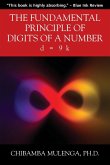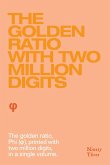Pi, the ratio of the circumference of a circle to its diameter, has been know to exist for thousands of years. Even before the common era, ancient mathematicians had found approximations for pi that were accurate to two digits (3.1). The Babylonians used 25/8 as an approximation of pi. The ancient Egyptians used 16/9 squared for pi. The next to improve the approximations for pi were Chinese mathematicians. The Chinese approximation was correct to seven digits (3.141592). In Greece, Archimedes used a polygon drawn outside a circle, and a polygon drawn inside a circle, and extended pi to three digits (3.14). Finally, when infinite series were developed, one could calculate pi with pen and paper to as many digits as one had time for. It was not until computers came along that it was practical to calculate pi to a million digits. Here, in this book, are the results."Probably no symbol in mathematics has evoked as much mystery, romanticism, misconception and human interest as the number pi"William L. Schaaf, Nature and History of Pi
Bitte wählen Sie Ihr Anliegen aus.
Rechnungen
Retourenschein anfordern
Bestellstatus
Storno









